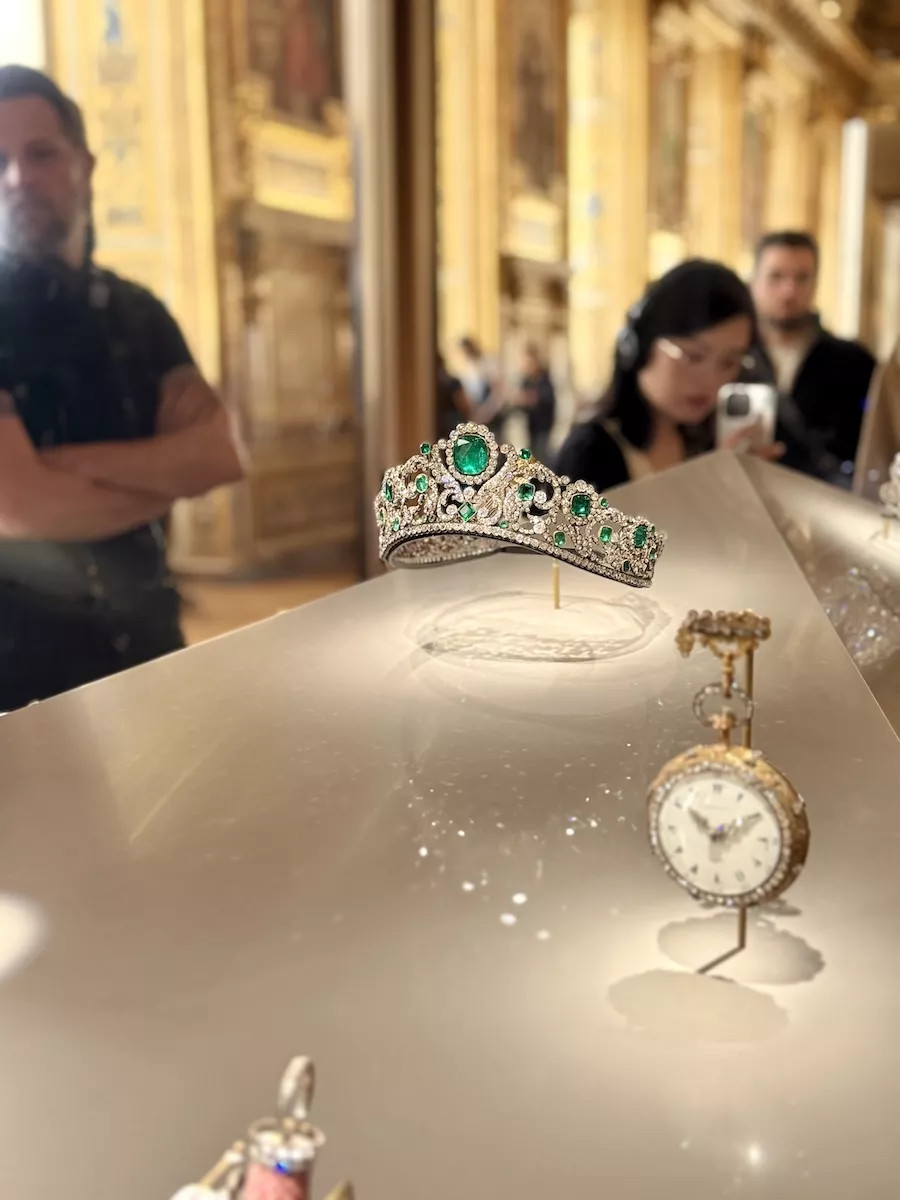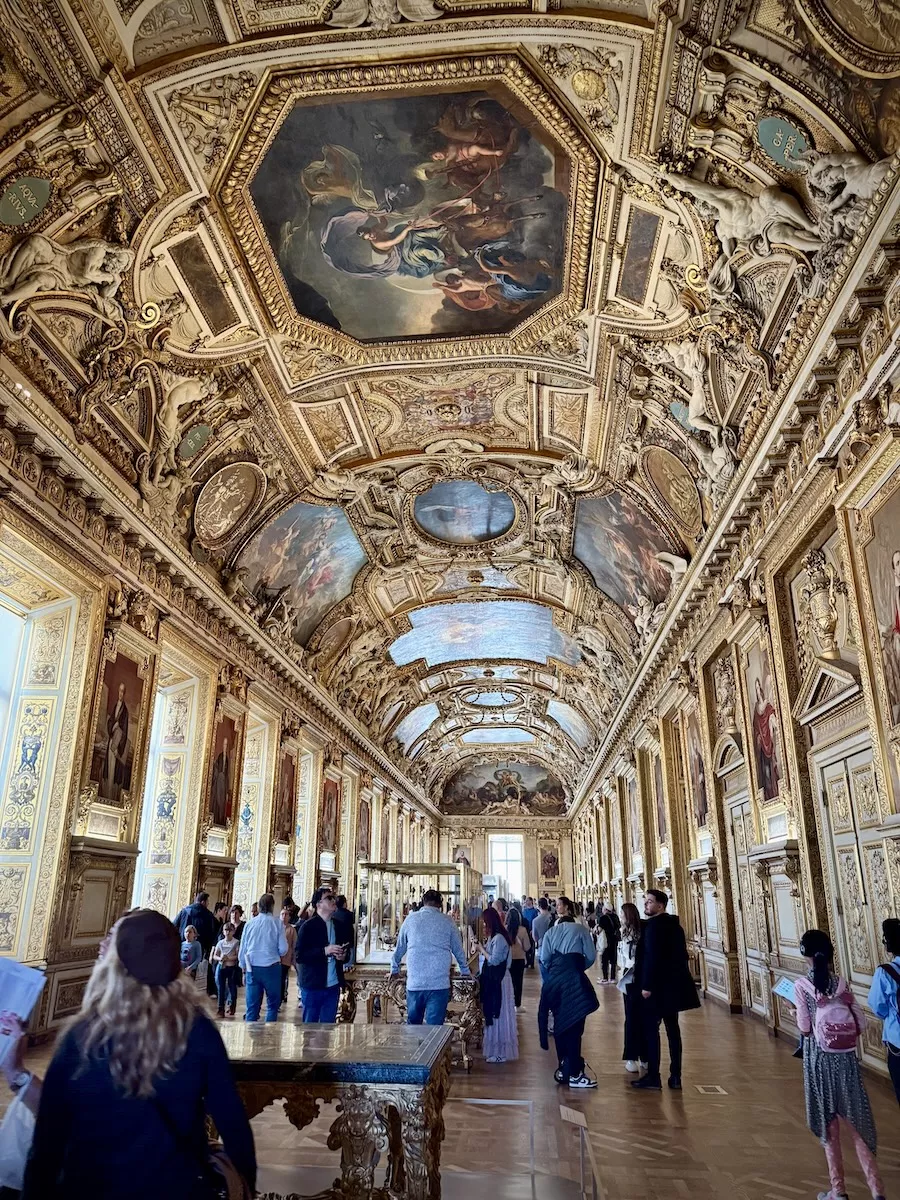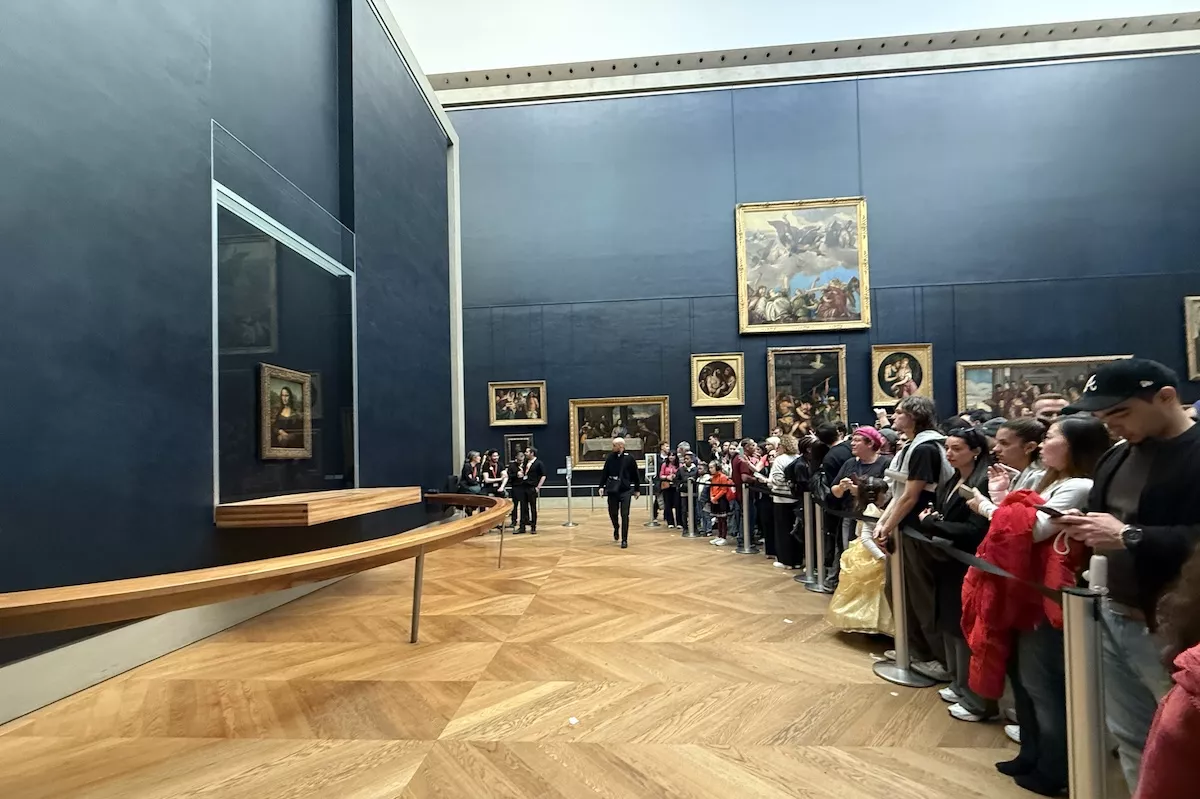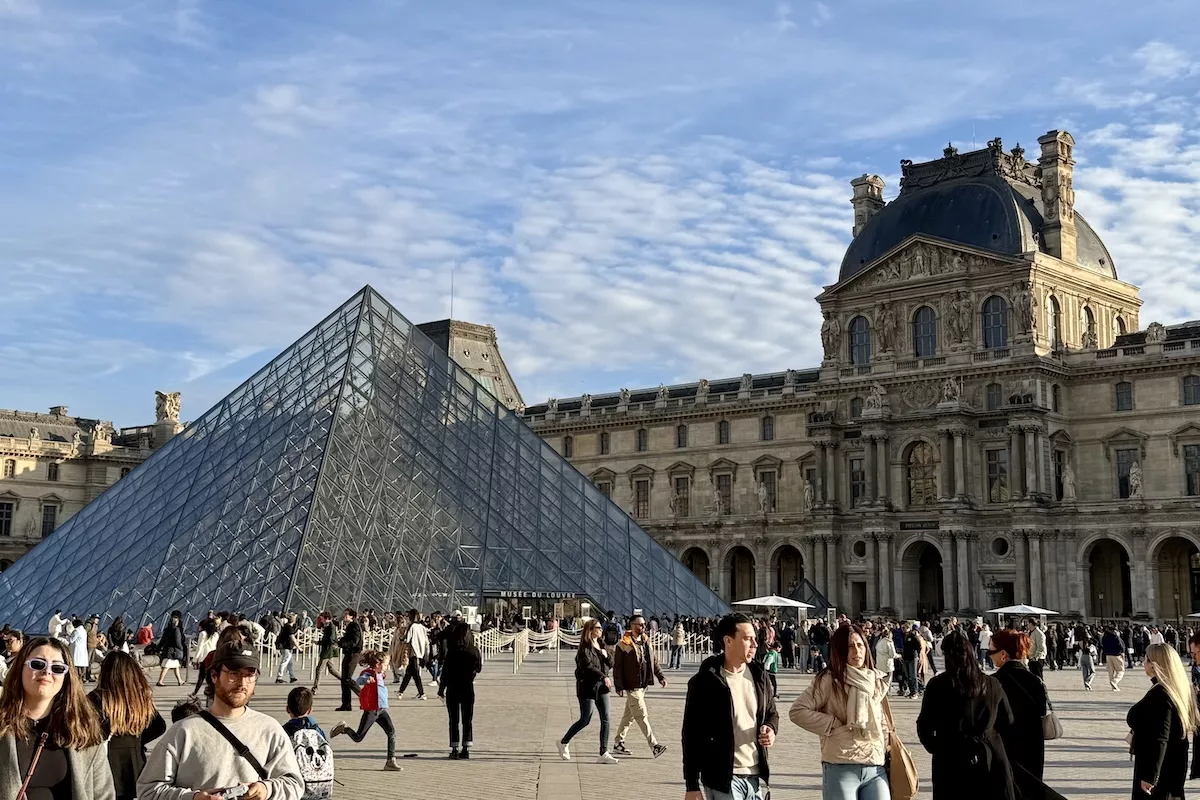French authorities are scrambling to recover a trove of priceless royal jewels stolen in a high-stakes heist at the Louvre in Paris, described by art experts as the “theft of the decade”.
The audacious robbery took place just after 9:30am on Sunday morning, when intruders gained access to the Louvre via a construction site scaffold, using a lorry-mounted platform to scale the museum’s façade and breach a window. Within minutes, they had smashed their way into the Galerie d’Apollon and vanished with an array of French Crown Jewels, many of which are considered irreplaceable cultural treasures.
Culture Minister Rachida Dati confirmed the thieves were in and out in under four minutes, calling the operation “very professional,” with no reported injuries or hostage situations.
“They don’t target people,” she said in a televised interview. “They enter calmly, smash display cases, take their loot, and leave.”

A National Failure
Interior Minister Laurent Nunez did not mince words, describing the incident as a “major robbery” and a “failure of our security services”. Speaking on French radio, Nunez revealed that the suspects used disc cutters to silently remove glass panels and made their escape on two Yamaha TMAX maxi-scooters.
“This was a well-prepared operation. They had clearly done reconnaissance,” he said, adding that forensic investigations are underway and that the museum’s security footage is being reviewed.
The robbers made their way directly to the section of the gallery housing a display of the French Crown Jewels — pieces once worn by Marie-Amelie, Empress Eugenie, and Empress Marie Louise. According to prosecutors, nine pieces were targeted; eight were stolen, and a ninth item, believed to be the crown of Empress Eugenie, was recovered at the scene but badly damaged.

The Stolen Jewels
The French Ministry of Culture released a full list of the missing artefacts, which includes:
-
A sapphire tiara, necklace, and earring set belonging to Queen Marie-Amelie and Queen Hortense
-
An emerald necklace and pair of earrings from the Empress Marie Louise collection
-
A “reliquary” brooch
-
Empress Eugenie’s tiara
-
A diamond corsage bow brooch belonging to Empress Eugenie, encrusted with over 2,400 diamonds
“These jewels have genuine heritage value and are, in fact, priceless,” said Nunez.
Art crime expert Arthur Brand called the heist a race against time, warning that once such high-profile items are dismantled, melted down, or sold on the black market, recovery becomes nearly impossible.
“They can’t be sold as they are, they’re too famous,” Brand told Sky News. “The only thing the thieves can do is melt down the gold and silver and recut the diamonds. After that, they’re gone forever.”
Panic and Closure
As word of the break-in spread, social media videos showed visitors scrambling to leave the museum in confusion. One witness described scenes of “total panic” as police swarmed the Louvre’s famous glass pyramid and attempted to enter from side doors.
The museum, which attracts up to 30,000 visitors a day, was closed to the public for the remainder of the day “for exceptional reasons,” according to a statement on X (formerly Twitter).
A Gallery of History—and Now, Infamy
The Galerie d’Apollon, where the theft occurred, is one of the Louvre’s most iconic rooms. Restored by Louis XIV following a devastating fire, it houses not only the Crown Jewels but also three historic diamonds: the Regent, the Sancy, and the Hortensia.
The Regent, at 140 carats, was once the largest diamond known to exist when it was discovered in India in 1698. It now sits behind bulletproof glass—a protection not shared by many of the display cases breached during Sunday’s heist.

A Painful Echo of the Past
This is not the first time the Louvre has suffered a historic loss. In 1911, the Mona Lisa was famously stolen by an Italian handyman who hid in the museum overnight and walked out with the painting tucked under his coat. It took two years for it to be recovered in Florence.
In 1983, two Renaissance-era suits of armour were taken from the museum’s collection and only recovered nearly 40 years later in 2021.
French President Emmanuel Macron has vowed swift justice. “We will recover the works and the perpetrators will be brought to justice,” he said in a statement.
Global Implications
The theft comes at a time when European museums are grappling with growing concerns over the security of cultural assets. France is home to countless works of heritage, many acquired over centuries and now held in public trust. This heist will likely reignite debate over museum security, insurance, and the vulnerability of iconic artefacts.
Stay updated with Monaco Life: sign up for our free newsletter, catch our podcast on Spotify, and follow us across Facebook, Instagram, LinkedIn, and Tik Tok.
Main photo credit: Cassandra Tanti
